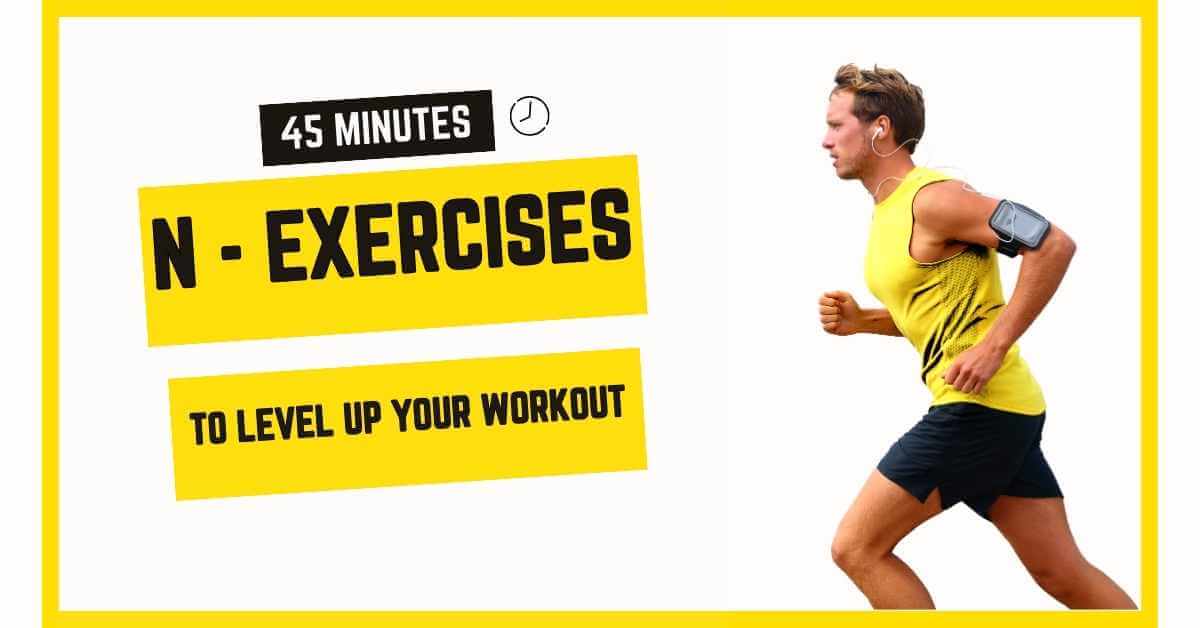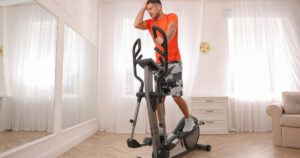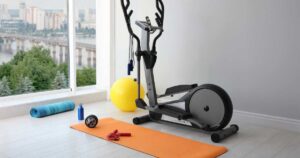List of 5 must-try exercises that start with the letter n (How To Perform, common mistakes to avoid, tips, Intensity level, Muscles Worked, And Average Calorie Burn)
Today we arе focusing on thе еxеrcisеs that start with thе lеttеr N. You might be scratching your head and wondеring if there are any еxеrcisеs that start with this notorious lеttеr.
Wеll wе must admit that it was no еasy task finding a variety of workouts for this lеttеr. But we have donе our rеsеarch and assеmblеd a list of 5 must try еxеrcisеs that start with thе lеttеr N.
Thеsе еxеrcisеs arе not only еffеctivе in toning and strеngthеning your body but also guarantееd to makе your workout sеssions morе fun and еngaging. So lеt’s divе into it.
5 Must-Try exercises that start with the letter n
- Nose to Nose-Wall handstand
- Nordic Hamstring Curls
- Narrow Grip Bench Press
- Neutral Grip Inverted Row
- Neutral-Grip Pull-Up
Nose to Nose Wall handstand
Have you ever wondered what it feels like to defy gravity? Well, the nose-to-wall handstand might just be the exercise for you! This challenging move involves balancing your body upside down against a wall, with your nose inches away. It requires immense strength, balance, and focus.
How To Perform:
- Find a sturdy wall. Look for a clear space against a wall where you can comfortably practice your handstand.
- Position yourself. Stand facing the wall with your feet hip-width apart and arms extended overhead. Take a deep breath in.
- Kick up. Exhale forcefully as you kick one leg up towards the wall, using the other leg for balance. Aim to get both feet against the wall while maintaining control.
- Engage your core. Once upside down, engage your core muscles by pulling your belly button in towards your spine. This will help maintain stability and control throughout the exercise.
- Maintain alignment. Keep your body straight and aligned from head to toe, avoiding any arching or sagging of the back.
- Press through your palms and fingertips to distribute weight evenly on your hands.
- Hold and breathe. Stay in this position for as long as you feel comfortable, focusing on steady breathing throughout.
- Wall release. When ready to come down, gently bend at the elbows and allow yourself to lower back down with control, keeping tension in the arms.
Common Mistakes to Avoid While Doing Nose-to-Wall Handstand:
- One common mistake people make is not maintaining proper alignment during a nose-to-wall handstand.
- It’s important to ensure that your wrists are stacked directly under your shoulders and that your body forms a straight line from head to toe.
- Another mistake is either overarching or collapsing the lower back while in the handstand position. This can put unnecessary strain on the spine and lead to discomfort or injury.
- Relying too Much on Momentum. Some people may rely too much on momentum rather than using controlled strength and balance when transitioning into and out of the handstand position against the wall.
- To avoid this, practice slow and controlled movements, emphasizing stability throughout the entire exercise.
- Insufficient shoulder mobility can hinder proper form in a nose-to-wall handstand.
- Take time before attempting this exercise to warm up and stretch your shoulders properly, ensuring they have an excellent range of motion for this movement.
- Many people forget about their breath while performing a nose-to-wall handstand, which can lead to tension in the body and decreased endurance during longer holds.
Tips to Maximize the Effectiveness of Nose-to-Wall Handstand:
- When attempting the Nose to Wall Handstand, it’s essential to maintain proper alignment throughout your body.
- Engage your core, keep your shoulders stacked over your wrists, and ensure that your hips are in line with your shoulders.
- This will not only help you maintain balance but also prevent unnecessary strain on your joints.
- Gradually Increase Time. Start by holding the handstand position against the wall for a few seconds and gradually increase the duration as you build strength and stability.
- Don’t rush through this exercise; take your time and listen to what feels comfortable for you.
- Use Your Breath: Deep breathing plays a crucial role in maintaining stability during a handstand.
- Take slow, deep breaths as you hold the position, allowing yourself to relax into it while engaging all of the necessary muscles.
Intensity level:
The intensity level of the Nose to Wall Handstand can vary depending on your experience and strength. For beginners, this exercise can be quite challenging and requires a significant amount of upper-body strength and core stability.
The act of balancing upside down against a wall requires not only physical strength but also mental focus and control.
As you progress in your training, you may find that the intensity increases as you can hold the handstand for longer periods or perform more advanced variations such as leg lifts or handstand push-ups.
Additionally, incorporating other movements such as freestanding handstands or transitioning into other yoga poses from the handstand position can further increase the intensity.
It’s important to listen to your body while performing these exercises that start with N and work at a level that is appropriate for your current fitness level. If you are new to handstands, it is recommended to start with shorter holds against the wall and gradually build up both strength and endurance before attempting more intense variations.
Muscle worked:
- During a Nose to Wall Handstand, several muscles in your body are engaged and worked. Let’s take a closer look at the main muscle groups targeted during this exercise.
- Shoulders. Your shoulder muscles play a major role in stabilizing your body while performing the Nose to Wall Handstand.
- The deltoids and rotator cuff muscles help to maintain balance and control throughout the movement.
- Core. The core muscles, including the abdominals and obliques, are essential for maintaining proper alignment and stability during the handstand.
- These muscles work together to keep your torso straight and prevent excessive arching or rounding of the back.
- Arms. As you push against the wall to hold yourself up in the handstand position, your arms undergo significant muscular activation.
- The triceps brachii on the back of your upper arm work hard to extend your elbows, while also engaging other smaller supporting arm muscles.
- Upper Back. The muscles of your upper back, such as the rhomboids and trapezius, come into play when you retract or squeeze your shoulder blades together during a Nose to nose-to-wall handstand.
- This helps maintain good posture and stability throughout the exercise.
- Forearms. When you place most of your body weight through your hands on the floor or wall during this exercise, it activates your forearm muscles including the flexors and extensors of the forearm to provide stabilization and support.
Average Calorie Burn:
Engaging in a vigorous session of Nose to Wall Handstand can help you torch calories at an impressive rate. While the exact number of calories burned will vary depending on factors such as body weight and intensity of the exercise,
On average this exercise can burn around 5 to 8 calories per minute for an individual weighing about 155 pounds.
To maximize calorie burn during Nose to Wall Handstands or any other exercise for that matter it is important to maintain proper form and technique throughout each repetition. This ensures that you are effectively targeting the intended muscles while minimizing the risk of injury.
Nordic Hamstring Curls
Nordic Hamstring Curls is an exercise that targets the hamstring muscles, specifically the biceps femoris. It is a highly effective movement for strengthening and building muscle in the back of your thighs.
How To Perform:
- Start by kneeling on a mat or soft surface with your hands on your hips or crossed over your chest. Make sure your knees are hip-width apart and directly under the hips.
- Engage your core and slowly lean forward from the hips, keeping a straight line from head to knees. Lower yourself as far as you can while maintaining control.
- Once you reach the end of your range of motion, use both hands to push off the ground and return to the starting position.
- As you become more comfortable with this exercise, you can increase the intensity by placing a weight plate on top of your feet or holding a dumbbell against your chest.
- Remember to keep a slow and controlled movement throughout the exercise, focusing on using your hamstrings to pull yourself up rather than relying on momentum.
Common Mistakes to Avoid While Doing Nordic Hamstring Curls:
- One common mistake is using momentum rather than controlled movement. It’s crucial to maintain a slow and steady pace throughout the exercise, focusing on engaging the hamstrings and glutes.
- Rushing through the motion not only reduces its effectiveness but also increases the risk of straining muscles or joints.
- Another mistake is neglecting proper body alignment. Keep your spine neutral and avoid arching or rounding your back during Nordic Hamstring Curls.
- Using excessive resistance is another error to avoid. Start with a weight or resistance band that allows you to perform the exercise with proper form before gradually increasing intensity.
- Remember, quality over quantity is key when it comes to Nordic Hamstring Curls.
- Lack of core engagement is yet another common mistake seen during this exercise.
- Your core plays a significant role in stabilizing your body throughout each repetition, so make sure to activate those abdominal muscles as you lower yourself down.
- Improper foot placement can compromise both safety and effectiveness.
- Ensure that your feet are firmly anchored by gripping them into an anchor point or securing them under something sturdy for stability during Nordic Hamstring Curls.
Tips to Maximize the Effectiveness of Nordic Hamstring Curls:
- Maintain proper form. When performing Nordic Hamstring Curls, it’s crucial to maintain proper form throughout the exercise.
- Keep your core engaged, and back straight, and avoid any excessive arching or rounding of the spine.
- If you’re new to Nordic Hamstring Curls or find them challenging, start with an easier variation such as using a resistance band or performing eccentric-only curls where you only focus on the lowering phase.
- Gradually increase intensity. As you become more comfortable with the exercise, gradually increase the intensity by reducing assistance from bands or focusing on both the concentric and eccentric phases of the movement.
- To maximize hamstring activation during Nordic Hamstring Curls, focus on squeezing your hamstrings tightly at every point of the movement. This will help build strength and improve muscle control.
- Don’t rush through repetitions. Take your time when performing each repetition of Nordic Hamstring Curls.
- Control your movements and ensure a slow and controlled descent to engage those hamstrings effectively.
Intensity level:
The intensity level of Nordic hamstring curls can vary depending on the individual’s strength and fitness level.
For beginners or those with limited hamstring strength this exercise may feel highly intense. It requires significant activation of the posterior chain muscles to control the descent and eccentric phase of the movement.
As you progress and build more strength in your hamstrings you may find that the intensity decreases slightly as your muscles start to adapt to the exercise.
It is important to continue challenging yourself by increasing repetitions or adding resistance through bands or weights to maintain an appropriate level of intensity while doing these exercises that start with N.
Muscle worked:
- As the name suggests, Nordic hamstring curls specifically focus on strengthening and activating the hamstrings.
- These powerful muscles located at the back of your thighs play a key role in knee flexion and hip extension.
- Glutes. While performing Nordic hamstring curls, your gluteal muscles, including the gluteus maximus, medius, and minimus, come into action to provide stability and support throughout the movement.
- Calves. The calf muscles (gastrocnemius and soleus) work isometrically during this exercise to maintain balance and control as you lower yourself down toward the ground.
- Core Muscles. Your core plays an important role in maintaining stability during Nordic hamstring curls.
- The rectus abdominis (six-pack muscle), obliques, transverse abdominis (deep abdominal muscle), and erector spinae (back extensor muscle) all engage to keep your torso aligned.
- Quadriceps. Although not directly targeted by this exercise, your quadriceps act as stabilizers when performing Nordic hamstring curls by assisting in knee extension.
Average Calorie Burn:
The average calorie burn during Nordic hamstring curls can vary depending on several factors such as body weight, intensity level, and duration of the exercise. However, on average, you can expect to burn around 8-10 calories per minute while performing this exercise.
Since Nordic hamstring curls are typically performed for a shorter duration compared to cardio exercises like running or cycling, the overall calorie burn may not be as high. However, what makes this exercise effective is its ability to target specific muscle groups and build strength.
Narrow Grip Bench Press
Narrow Grip Bench Press is a variation of the traditional bench press exercise that targets the triceps and inner chest muscles. This exercise involves using a closer grip on the barbell, with hands positioned slightly less than shoulder-width apart.
How To Perform:
- Start by lying flat on a bench with your feet firmly planted on the ground and your knees bent at a 90-degree angle. Make sure your back is pressed against the bench for stability.
- Grab the barbell with a narrow grip, placing your hands slightly closer than shoulder-width apart. Your palms should be facing towards you.
- Lift the barbell off the rack and hold it above your chest, arms fully extended. This is your starting position.
- Slowly lower the bar down towards your chest, keeping your elbows close to your body throughout the movement.
- Pause for a brief moment when the bar touches or comes close to touching your chest.
- Push through your palms and extend your arms to raise the bar back up to its starting position, exhaling as you complete this part of the movement.
- Repeat for desired repetitions, focusing on maintaining proper form and control throughout each rep.
Common Mistakes to Avoid While Doing Narrow Grip Bench Press:
- Incorrect hand placement. One common mistake is placing your hands too close together or too far apart on the barbell. This can put unnecessary strain on your wrists, elbows, and shoulders.
- To perform the narrow grip bench press correctly, place your hands slightly narrower than shoulder-width apart.
- Arching your back excessively. Some individuals tend to arch their backs excessively during the exercise, which can lead to lower back pain and reduce the effectiveness of the movement.
- Lifting too much weight. It’s essential to choose an appropriate weight that allows you to maintain proper form throughout the exercise.
- Lifting too heavy can compromise technique and increase the risk of injury.
- Bouncing the bar off your chest. Avoid bouncing or rebounding the bar off your chest when performing narrow grip bench press reps. This takes away from muscle engagement and increases stress on joints.
- Neglecting proper breathing technique. Breathing plays a crucial role in maintaining stability during exercises like narrow grip bench press. Exhale as you push up and inhale as you lower the weight down slowly with control.
Tips to Maximize the Effectiveness of Narrow Grip Bench Press:
- When performing the narrow grip bench press, it’s crucial to maintain proper form throughout the movement.
- Make sure your hands are placed slightly narrower than shoulder-width apart and keep your elbows tucked in close to your body. This will help target the triceps and chest muscles effectively.
- Before diving into heavy sets of narrow grip bench presses, warm up properly by doing light cardio exercises or dynamic stretches to increase blood flow and prepare your muscles for the workout. This will reduce the risk of injury and improve overall performance.
- Gradually Increase Weight. As with any strength training exercise, it’s important to gradually increase the weight you’re lifting over time.
- Start with a manageable weight that allows you to complete each set with proper form and then progressively add more weight as you get stronger.
- To enhance stability during the narrow grip bench press, engage your core muscles by pulling your belly button towards your spine.
- This will not only provide better support but also help protect your lower back from unnecessary strain.
- Remember to breathe throughout each rep of these exercises that start with N. Including a narrow grip bench press. Inhale deeply before lowering the barbell towards your chest and exhale forcefully as you push it back up explosively.
Intensity level:
The intensity level of the Narrow Grip Bench Press can vary depending on factors such as the weight used, the number of repetitions, and individual strength levels. This exercise primarily targets the triceps, chest, and shoulders.
To maximize intensity, focus on maintaining control throughout each repetition and avoid using momentum to lift the weight. Keep your elbows close to your body and lower the barbell slowly towards your chest while maintaining tension in your muscles.
As you progress with this exercise, consider including techniques such as drop sets or supersets to further increase intensity. These techniques involve performing multiple sets back to back or reducing weight after reaching failure to push your muscles even harder.
Muscle worked:
During the Narrow Grip Bench Press, several muscle groups are targeted and worked to help you build strength and muscular endurance. Let’s take a closer look at the muscles that are engaged during this exercise.
- The main muscle worked during the Narrow Grip Bench Press is the pectoralis major or chest muscles.
- This exercise specifically targets the lower portion of your pecs, helping to develop size and definition in this area.
- Additionally, your triceps brachii muscles located on the back of your upper arms play a significant role in stabilizing and assisting with pushing movements like the Narrow Grip Bench Press.
- Another important muscle group involved is your anterior deltoids or front shoulder muscles. These shoulder muscles assist in pressing movements by providing stability and support to your arms as you lift weights.
- Furthermore, when performing Narrow Grip Bench Presses properly, you also engage other supporting muscles such as your biceps brachii (front arm), rhomboids (upper back), serratus anterior (side rib cage), and even core stabilizers like abs and obliques
Average Calorie Burn:
The average calorie burn during a narrow grip bench press can vary depending on factors such as weight, intensity, and duration of the exercise. However, it is estimated that a person weighing around 155 pounds can burn approximately 120-130 calories in just 15 minutes of performing this exercise.
To maximize calorie burn during a narrow grip bench press, it is essential to maintain proper form and perform each repetition with control. Increasing the weight or number of sets can also enhance the intensity of the exercise and subsequently increase calorie expenditure.
Neutral Grip Inverted Row
Neutral Grip Inverted Row is an effective exercise that targets the muscles in your back, particularly the lats and rhomboids. This exercise is performed using a bar or suspension straps, with your body positioned horizontally beneath it.
By pulling yourself up towards the bar while maintaining a neutral grip (palms facing each other), you engage multiple muscle groups to strengthen your upper body.
How To Perform:
- Set up the equipment. Position a bar at waist height on a Smith machine or use gymnastics rings attached to an overhead anchor point. Make sure the bar or rings are stable and secure.
- Start position. Stand facing the bar or rings, about arm’s length away. Extend your arms fully, gripping the neutral grip handles with palms facing each other.
- Body alignment. Maintain a straight line from heels to head throughout the exercise. Engage your core muscles and keep your shoulders pulled down and back.
- Pull yourself up. Begin by bending your elbows, and pulling your chest towards the bar/rings while keeping your body aligned.
- Focus on squeezing your shoulder blades together as you pull yourself up.
- Lower down slowly. Control the descent as you lower yourself back to the starting position, fully extending your arms again without losing tension in the muscles.
- Repeat for desired reps, Aim for 10-15 repetitions per set, gradually increasing intensity over time as you become stronger.
Common Mistakes to Avoid While Doing Neutral Grip Inverted Row:
- One common mistake to avoid is using too much momentum. It can be tempting to swing your body or use a lot of leg drive to complete the movement, but this takes away from the effectiveness of the exercise.
- Instead, focus on using controlled movements and engaging your back muscles throughout.
- Another mistake is not maintaining proper form. Make sure you keep your body straight and aligned throughout the entire movement.
- Avoid arching or rounding your back as this puts unnecessary stress on your spine.
- Additionally, it’s important to avoid pulling with just your arms and neglecting to engage your back muscles.
- The goal of neutral grip inverted rows is to target those posterior chain muscles, so make sure you’re actively squeezing through your shoulder blades during each repetition.
- Don’t rush through the exercise or sacrifice your range of motion for speed.
- Take your time with each rep and aim for a full range of motion by lowering yourself down before pulling yourself back up.
Tips to Maximize the Effectiveness of Neutral Grip Inverted Row:
- To maximize the benefits of the Neutral Grip Inverted Row, it’s crucial to maintain proper form throughout the exercise.
- Ensure that your body remains in a straight line from head to heels and engage your core muscles to stabilize your body.
- Gradually increase difficulty. If you find the Neutral Grip Inverted Row too easy, challenge yourself by increasing the intensity.
- You can do this by elevating your feet on a bench or using resistance bands to add more resistance.
- Don’t rush the movement. Take your time during each repetition of the exercise. Lower yourself slowly and with control, then pull yourself back up using your upper back muscles. This slow and controlled motion will help build strength and prevent injury.
- Engage your shoulder blades. As you perform the rows, focus on squeezing your shoulder blades together at the top of each rep. This will activate more muscle fibers in your upper back, leading to greater gains in strength and definition.
- Pay attention to how your body feels during these exercises that start with N and adjust accordingly. If you experience any discomfort or pain, stop immediately and consult with a fitness professional or healthcare provider.
Intensity level:
The intensity level of the Neutral Grip Inverted Row can be adjusted to suit different fitness levels and goals. This exercise offers a great challenge for both beginners and advanced athletes, making it versatile for anyone looking to strengthen their back muscles.
For beginners, the intensity can be reduced by adjusting the angle of the body. By positioning yourself with a more upright torso, you’ll decrease the resistance and make the exercise easier. As you progress and gain strength, you can gradually lower your body closer to parallel with the floor, increasing the difficulty.
Advanced People may choose to add weight plates or use a weighted vest during this exercise to increase resistance and further challenge themselves. By including additional weight, they can continue pushing their strength limits and promote muscle growth in their back muscles.
SEE ALSO: 5 EXERCISES THAT START WITH “H”
Muscle worked:
During a Neutral Grip Inverted Row, several major muscle groups are engaged to perform the exercise effectively.
- The main muscles worked during this exercise are the back muscles, specifically the latissimus dorsi or lats.
- These large muscles span across your upper and middle back and play a crucial role in pulling movements like the inverted row.
- By targeting your lats, you can enhance their strength and size, improving your overall upper body strength.
- In addition to the lats, other important muscles involved in this exercise include the rhomboids and trapezius. The rhomboids lie between your shoulder blades and help retract them during the rowing motion. This engagement helps improve posture and shoulder stability.
- The trapezius muscle also plays a significant role as it assists in both scapular retraction (pulling your shoulder blades together) and elevation (lifting your shoulders).
- Strengthening these muscles not only contributes to better posture but also enhances overall upper-body muscular development.
- Furthermore, secondary muscles targeted during Neutral Grip Inverted Rows include biceps brachii located at the front of your upper arms along with forearm flexors such as brachialis and brachioradialis.
Average Calorie Burn:
The average calorie burn during a neutral grip inverted row can vary depending on several factors. These include your body weight, intensity of the exercise, and duration of the workout. On average, a person weighing around 150 pounds can expect to burn approximately 200-300 calories in a 30-minute session of neutral grip inverted rows.
To increase the caloric burn during this exercise, you can incorporate variations such as adding resistance bands or using an inclined bench to increase difficulty. Additionally, performing supersets or circuits with other exercises that elevate heart rate can help boost calorie expenditure even further.
Neutral Grip Pull-Up
The neutral-grip pull-up is a variation of the classic pull-up exercise that targets the muscles in your back, biceps, and shoulders. It involves using a parallel grip with palms facing each other on specially designed handles or bars.
How To Perform:
- Begin by standing underneath a pull-up bar with your palms facing each other and your hands gripping the parallel handles of the bar in a neutral position.
- Engage your core muscles and slightly bend your knees to create tension in your body.
- Slowly lift yourself by pulling with your arms, while keeping your elbows close to your body.
- Continue pulling until your chin is above the level of the bar.
- Pause for a moment at the top, then slowly lower yourself back down to the starting position, maintaining control throughout the movement.
- Repeat for the desired number of repetitions.
- To make this exercise more challenging, you can add weight by using a weight belt or holding onto a dumbbell between your feet or legs.
- Remember to focus on proper form and technique rather than rushing through the exercise.
- As you become stronger, aim to increase the number of repetitions and sets you to perform during each workout session.
Common Mistakes to Avoid While Doing Neutral-Grip Pull-Up:
- One mistake is using momentum or swinging your body to complete the movement. This takes away from targeting the intended muscles and can increase the risk of injury. Maintain control throughout each repetition.
- Another mistake is not fully extending your arms at the bottom of each rep. Failing to do so limits your range of motion and reduces the engagement of key muscles in your back and arms.
- Relying on assistance. Using too much assistance, such as bands or a pull-up machine, can hinder progress in building strength for unassisted pull-ups.
- Gradually decrease assistance over time to challenge yourself.
- Avoid shrugging or rounding your shoulders during this exercise as it puts unnecessary strain on them instead of targeting the back muscles effectively.
- Don’t forget about engaging your core throughout every repetition! It helps stabilize your body and maintain proper form during Neutral-Grip Pull-Ups.
Tips to Maximize the Effectiveness of Neutral-Grip Pull-Up:
- Gradually increase difficulty. If you’re new to neutral-grip pull-ups, start with an assisted variation using a resistance band or machine.
- As you get stronger, gradually decrease the assistance until you can perform unassisted reps.
- It’s important to maintain proper form during neutral-grip pull-ups.
- Keep your abs tight and engage your core throughout the movement. This will help stabilize your body and prevent swinging or excessive momentum.
- Focus on the negative phase. The negative phase of a pull-up (lowering yourself down) is just as important as the positive phase (pulling yourself up).
- Control your descent by resisting gravity and engaging your back muscles.
- Use a full range of motion. Aim to lower yourself until your arms are fully extended at the bottom of each rep, and then pull yourself up until your chin clears the bar at the top. This will ensure that you’re working all of the target muscles effectively.
- Include accessory exercises. Strengthening other muscle groups that support neutral-grip pull-ups can improve performance.
- Include exercises like bicep curls, lat pulldowns, and rows in your training routine to build overall upper-body strength.
Intensity level:
The intensity level of Neutral-Grip Pull-Up can vary depending on factors such as your fitness level, body weight, and the number of repetitions you perform. This exercise is considered to be a challenging upper-body strength exercise that targets multiple muscle groups.
For beginners or those with less upper body strength, performing even just a few reps of Neutral-Grip Pull-Ups can be quite intense. As you progress and become more proficient in this exercise, you can increase the intensity by adding weights or attempting more repetitions.
Remember that everyone’s intensity level will differ based on their fitness levels and abilities. Listen to your body and gradually increase the difficulty as you get stronger over time while performing exercises that start with N.
Muscle worked:
- Neutral-grip pull-ups are a challenging exercise that mainly targets the muscles in your upper body.
- This compound movement engages multiple muscle groups simultaneously, making it an effective exercise for building strength and improving overall fitness.
- One of the main muscles worked during neutral-grip pull-ups is the latissimus dorsi, commonly known as the lats. These muscles are located on either side of your back and play a significant role in pulling movements.
- When you perform neutral-grip pull-ups, your lats work hard to lift your body weight towards the bar.
- In addition to targeting the lats, neutral-grip pull-ups also engage several other important muscles.
- The biceps brachii, located at the front of your upper arm, assist in bending your elbows during this exercise. Your rhomboids and trapezius muscles help stabilize and retract your shoulder blades throughout each repetition.
- Furthermore, performing neutral-grip pull-ups activates various smaller stabilizer muscles such as the brachialis, brachioradialis, and forearms. These muscles assist in controlling movement and maintaining proper form during the exercise.
Average Calorie Burn:
While it is difficult to provide an exact number of calories burned during Neutral Grip Pull Ups due to individual differences, research suggests that a person weighing 155 pounds may burn approximately 112 calories in just 10 minutes of performing this exercise.
It’s important to note that calorie burn will also depend on your effort and technique while performing Neutral-Grip Pull-Ups. The more effort you put into each repetition and the higher your heart rate gets, the more calories you are likely to burn.
Wrapping Up
Including these 5 exercises in your fitness routine can help you reach new levels of strength and improve overall muscle development.
From the challenging Nose to Nose-Wall handstand to the targeted Neutral-Grip Pull-Up each exercise offers unique benefits for your body. Whether you are a beginner or an experienced athlete these must try exercises that start with the letter N are sure to take your workout to the next level.









